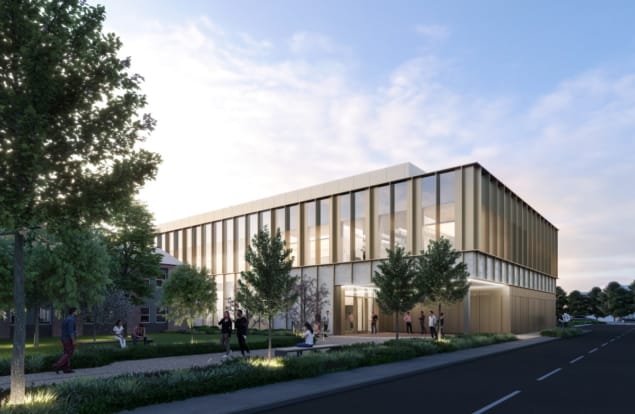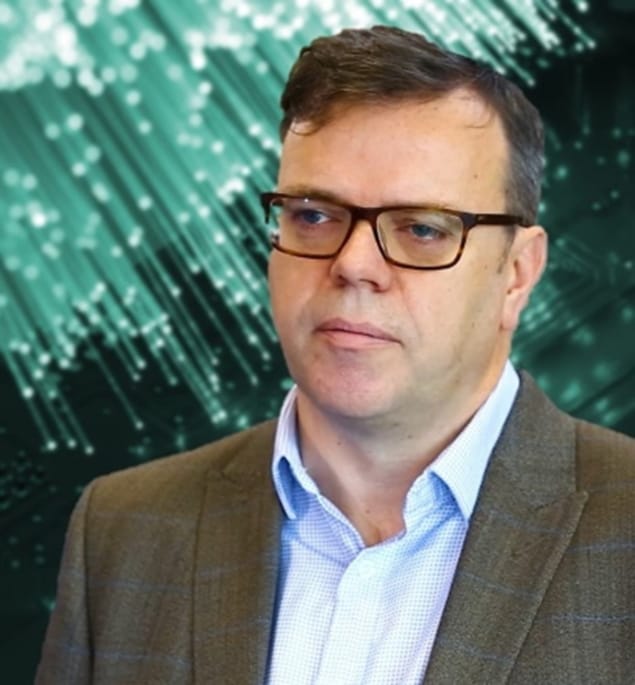Building a quantum future
20 Sep 2021 Sponsored by National Quantum Computing Centre
The UK’s National Quantum Computing Centre aims to create a collaborative working environment for building prototype quantum machines and developing innovative applications

Construction will soon be starting on the world’s first national laboratory to be dedicated to quantum computing. With funding of £93m over the next five years, the primary objective of the UK’s National Quantum Computing Centre (NQCC) is to accelerate the scale-up and exploitation of practical quantum computers. The NQCC will be built in Harwell, Oxfordshire, alongside several other top-tier scientific facilities operated by the Science and Facilities Technology Council (STFC), and is due to open in 2023.
One of the NQCC’s key deliverables is to demonstrate a quantum computer with more than 100 qubits by 2025, which means that the NQCC team has already started to commission its first tranche of R&D projects. “The building is important, but we couldn’t wait for it to be finished because the technology is evolving rapidly and our international competitors and collaborators are moving forward at pace,” says the NQCC’s director Michael Cuthbert. “We need to do something tangible, to get started with some development work that we can learn from and that will shape our future technology programme.”
The initial objectives and priorities for the NQCC have emerged from a detailed technology roadmap developed by around 20 of the UK’s leading quantum experts over the last two years. The roadmap highlights current activities in quantum computing, identifies the key strengths of the UK’s quantum community, and evaluates the maturity of different technology platforms and their potential over the next 10 years. Cuthbert and his team have now translated the outcomes of that roadmap into a series of work packages across software, hardware and application development that are now being awarded competitively to both academic and industrial partners.
The NQCC is fortunate to have access to a thriving quantum community of research groups and start-up companies, as well as larger industrial organizations that could become important end-users for future quantum computers. That collaborative ecosystem has been fostered in large part by the UK’s National Programme for Quantum Technologies, which has supported technology hubs in quantum sensing, imaging, communications and computing since 2014. While the UK is traditionally seen as strong in academic research but weaker on commercial exploitation, Cuthbert points out that this co-ordinated activity has already spawned 41 start-up companies that are already capitalizing on the emerging market for quantum technologies. “Between them they have raised more than £135m in investment funding,” he says. “They are developing robust business models and making international connections that could enable them to become the major global players of the future.” Michael Cuthbert, director of the NQCC: “Quantum computing needs to deliver applications that make a real difference across different economic sectors.” (Courtesy: STFC)
Michael Cuthbert, director of the NQCC: “Quantum computing needs to deliver applications that make a real difference across different economic sectors.” (Courtesy: STFC)
 Michael Cuthbert, director of the NQCC: “Quantum computing needs to deliver applications that make a real difference across different economic sectors.” (Courtesy: STFC)
Michael Cuthbert, director of the NQCC: “Quantum computing needs to deliver applications that make a real difference across different economic sectors.” (Courtesy: STFC)A primary objective for the NQCC will be to accelerate the growth of that quantum economy by speeding up the migration of scientific research into commercial exploitation. “There is often a gap in skills and resources when going from purely academic research into the commercial sector, and the NQCC will be aiming to bridge that gap,” explains Cuthbert. As well as incubating new start-ups and making connections with industry, an important role for the NQCC will be to nurture training and skills development – enabling academics to move into the commercial world and industry professionals with more general engineering and computing backgrounds to gain the knowledge they need to work with quantum technologies.
When the building opens in 2023, it will offer collaborative working spaces along with laboratories for testing devices and building prototype quantum computers. As well as pursuing its own R&D projects, the NQCC will continue to commission external R&D from research groups and industrial partners, and in some cases will co-develop specific technologies or applications. “We want to accelerate our own roadmap, as well as those of the academic and industrial communities,” says Cuthbert. “We don’t want to duplicate work that’s being done very successfully elsewhere.”
Cuthbert is acutely aware that the path towards useful quantum computing will be long and challenging. The initial focus for the centre is to demonstrate a working quantum computer with more than 100 qubits, which will operate in the so-called noisy intermediate-scale quantum (NISQ) regime. Such early machines are vital for demonstrating capability and showing the promise of quantum computers, but they will not be able to challenge the performance of today’s high-performance supercomputers.
“It is a much longer roadmap, perhaps 10 to 15 years, towards large-scale machines that will realize the fully transformative power of quantum computing,” says Cuthbert. “Modest-scale machines are part of the journey to getting there, and that long-term endeavour is one of the reasons we need a national facility.”
A crucial element of that long-term vision is to catalyse a user community that will help to identify useful applications for quantum computers. “Until now we’ve mostly focused on technology development, but ultimately quantum computing needs to deliver applications that make a real difference across different economic sectors,” he says. “The NQCC has an important role to play in providing access to third-party machines, particularly for the research community, and then providing applications support to develop a user community that can really explore the value that can be derived from quantum computing.”
For that reason the NQCC is now commissioning a number of smaller projects to develop use cases for today’s prototype machines. These projects will explore the impact that quantum computing might have in different business sectors and research fields, and attempt to translate complex problems in those different domains into tasks that quantum computing can address. “The outcomes from those projects will go to the heart of whether quantum computing is just a science project, or whether it will really deliver on the potential that everyone is talking about,” comments Cuthbert.
Meanwhile, in its bid to build a prototype machine with more than 100 qubits, the NQCC will initially focus its efforts on two technology platforms – superconducting qubits and trapped-ion systems – that the roadmap identified as having the most chance of early success. However, Cuthbert is quick to point out that other technologies could also play an important role in the future. “We have said all along that it’s far too early to be picking winners. This was about identifying where we should start, rather than saying that this is the one and only technology decision we will ever take,” he says. “We will be continuously assessing that roadmap and the ongoing development of alternative platforms, and figuring out how to bring frontier development work into the NQCC programme.”
The most fundamental challenge for the developers of future quantum computers will be to scale the number of qubits without scaling their inherent noise. Current prototypes incorporate some level of error mitigation to reduce the effects of noise, but many more qubits will be needed to enable full-scale error correction. Some estimates suggest that as many as 10,000 qubits might be needed provide one operational qubit in a general-purpose quantum computer.
Another pressing priority will be to find a way to scale the control system and associated engineering infrastructure along with the devices themselves. The quantum computers that have already been demonstrated by the likes of Google and IBM require thousands of coaxial cables to switch and readout the state of each individual qubit, while trapped-ion systems require optical measurements that become increasingly complex as the machine gets larger.
“We will need some major technology breakthroughs to allow us to address the qubits more quickly and efficiently,” says Cuthbert. “Many groups are already working on technologies to multiplex the signals that are used to control the qubits, and one major step forward would be to integrate some of the control systems into the cryogenic chamber so they are much closer to the physical qubits.”
Overcoming those technology hurdles will require not just fundamental breakthroughs in quantum physics, but also significant innovations in systems engineering and computational science. “We need a whole range of skills and knowledge to deliver the future roadmap for quantum computing,” says Cuthbert, who has just embarked on an ongoing recruitment process that will see 65 people join the NQCC by the time the building opens in 2023. “We need scientists with an academic background in quantum computing who want to play a role in translating the technology, as well engineers and computer scientists who want to work with us to understand and shape the future of quantum computing.”
Sponsored by National Quantum Computing Centre
from physicsworld.com 20/10//2021

Δεν υπάρχουν σχόλια:
Δημοσίευση σχολίου